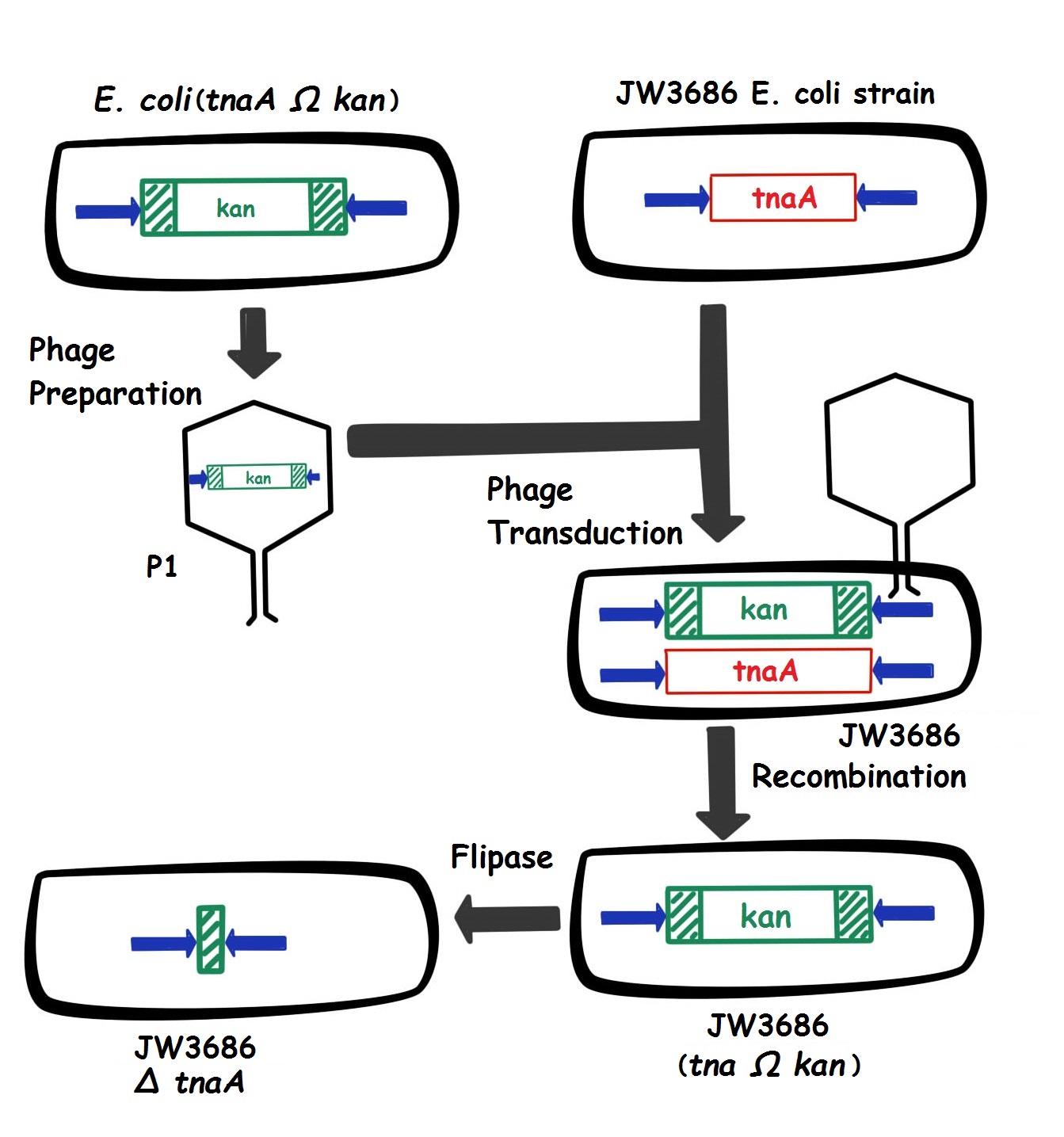Team:Paris Saclay/Project/Odor-free ecoli
From 2014.igem.org

Contents |
Countdown
This page is under Romain's responsibility
- Deadline: 08/oct.
- Completed text.
- Deadline: 12/oct
- Final review Philipe.
Odor-free E.coli chassis
Introduction
Escherichia coli stinks because of the tnaA gene which produces an enzyme that transforms the L-tryptophan into indole, responsible for the stench. If we want our lemon to smell like one, we have to delete this gene.
The Principle of the construction
In the lab, we already had a strain in which the tnaA was replaced by a kanamycin resistance, but this strain was too modified to be used for our project. So we switched the tnaA sequence with the kanamycin resistance in our bacterium by phage transduction. Transduction is the transfer of bacterial DNA from one bacterium (the donor) to another (the recipient) by a bacteriophage P1.
At first, the modified bacteria (cell donor) are infected by P1 phage. Transducing bacteriophage particles are formed in the donor bacterial cells during the phage growth. The bacterial chromosome is broken up into small fragments (approximately the same length as the P1 DNA). The phage particles mistakenly incorporate a piece of the bacterial DNA in place of phage DNA.
After the recombination, we used a flipase to delete the kanamycin resistance. The remaining bacterium doesn't smell at all.
 "
"






